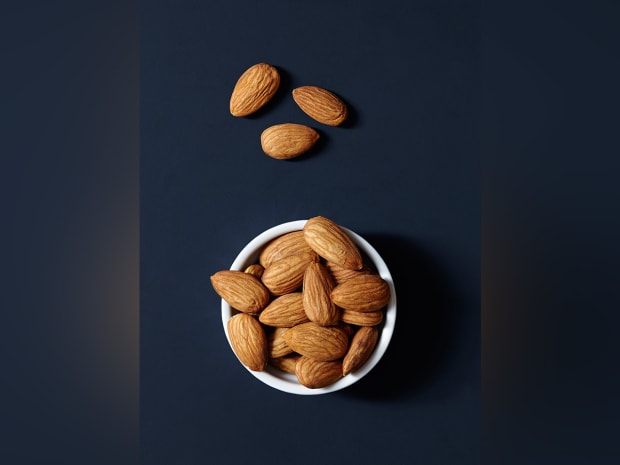The 13 Most Basic Rules of Clean Bulking
[ad_1]
It’s an endless cycle for some guys: Turn into a garbage disposal to bulk up, then crash diet to burn the belly fat and reveal those hard-earned abs. Needless to say, that’s probably not the best way to go about changing your physique. (Also: You can’t out-exercise a bad diet.) That’s why you need to clean bulk.
We’ll never call it easy, but it’s definitely possible to get strong and stay cut with the right balance of macros, nutrients, and training. We tapped Dan Trink, C.S.C.S., director of training operations at Peak Performance in New York City, to explain the ins and outs of growing big with clean bulking. From picking the right fuel and skipping processed food to tracking progress and getting enough sleep, here are his 13 rules that will help you bulk without getting fat.
Here’s his guide to getting more muscle—without the fat.

Kirill Rudenko/Getty Images
1. Increase your calories
“You can’t gain muscle or weight if you continue to be in a caloric deficit,” says Trink. “You need to take in more calories on a daily or at least weekly basis.” (Most guys, especially those new to the weight room, mess this part up.) A good estimate of how many calories you should be consuming? Take your body weight and multiply it by 16. (For example: 200 pounds x 16 = 3,200 calories.) If you don’t see any gains after two weeks, try increasing your calories by 200 per day until you hit the sweet spot.

2. Get the right fuel
Aim for a 40/30/30 percentage breakdown of protein to carbs to fats during the day. You’ll want to save most of your carbs for workout days to take advantage of that quick energy; and if you can, eat your biggest meal right after training. (Your metabolism is kickin’ into high gear at that point and you don’t want any muscle to be broken down into fuel.) Think of carbs like fuel: you have to burn some off before you can refuel. But if you try to add gas to an already full tank, you’ll get nowhere.

3. Stock up on protein
A juicy steak at dinner won’t cut it—protein needs to be spread throughout the day so you can fuel muscle growth 24/7. (Most guys hitting the gym need about .5 grams of protein per pound of body weight each day.) Pack it into four meals through sources like lean chicken, beef, salmon, eggs, quinoa, cottage cheese, and nuts.

4. Skip processed foods
A double cheeseburger and fries will certainly get you to your calorie goals, but processed foods do zero for your insides and general physique. All that sugar, salt, and saturated fat can cause you to crash (lowering your odds of getting to the gym) and also tack on an unwanted layer of fat in no time. With every meal, eat plenty of veggies and lean meats. When choosing your carb source, pick foods like potatoes, yams, rice, whole grains, oats, etc. Also, avoid refined oils, which can sneak in extra calories and lead to more fat gains.

5. Hit the weights hard
You’ll want to clock around four strength-training sessions a week, says Trink. (Rest days are actually important—that’s when the muscles grow.) “Splitting up days between body parts (so having a chest and back day, or a leg day) can be effective for gaining size, too,” he adds.

6. Keep your reps high
You don’t want to be known as the guy at the gym who half-asses his reps. If you have to bring the weight down slightly to finish the full range of motion and reps during a move, do it—you want to stress the muscles for a long enough time to stimulate growth. For most exercises, aim to finish “anywhere from 8-15 reps per set,” says Trink.

7. Try some drop sets
Finish your regular lifting set to failure, then grab some weights that are 25% lighter and crank out as many additional reps as you can. You’re forcing your body to use every muscle fiber its got for total burnout, which equals faster growth.

8. Get just enough cardio
A day or two of cardio per week will help you avoid fat gains and keep your ticker healthy, without burning off all the calories you need to get big. Keep it simple—pickup basketball, a light jog. This is not the time to throw in some weekend 18-milers.
One to two times a week, do 30–60 minutes of steady-state cardio around 65% of your maximum heart rate (220 – age). You’ll avoid unwanted fat gains, clear lactic acid and cellular waste, and improve your heart health. You’ll also improve your work capacity so you can push yourself harder during resistance training, which will ultimately help you build more muscle.

9. Track your progress every 4 weeks
Analyze your body fat percentage, circumference measurements, and weight every month to ensure you’re on the right track or see if you need to alter your program. If you lost weight or stayed the same, slowly increase your caloric intake. If you gained a little fat, carefully reduce your caloric intake. This is how you avoid wild swings in body weight.

10. Incorporate compound movements
Mix it up with big, compound movements such as deadlifts, squats, presses, and pullups, along with isolation work like curls or calf raises. You’ll save time, build strength, and release more testosterone, which are all important factors when bulking.

11. Sleep 7-8 hours per night
During sleep, your body releases the highest amount of human growth hormone, a crucial ingredient to building a lean, ripped body. It’s also when your body repairs its muscles and turns off your “fight-or-flight” response (called your “sympathetic nervous system”), which helps manage stress. Avoid shortchanging your results and get seven to eight hours of deep, restful sleep per night.

12. Use time under tension
To build more size and muscle, blend high-intensity with high-volume. For example, do eight to 15 reps per set to increase your time under tension (TUT) and focus on hypertrophy. While traditional strength programs of five reps or less build some muscle, a lot of the gains you see are actually in your neural system.

13. Get lean first, then clean bulk
Before you start your clean bulk, check if your body is at the right starting point. If you’re around 10% body fat or have visible abs, your body can optimally distribute nutrients between muscle and fat and you’ll neutralize any fat gains.
If you’re skinny-fat, however, you’ll have a disadvantage in insulin sensitivity gaining muscle versus fat. Get to your desired level of leanness first, then clean bulk to the physique you want.
Return to the Fuel Your February Guide
[ad_2]
Source link


